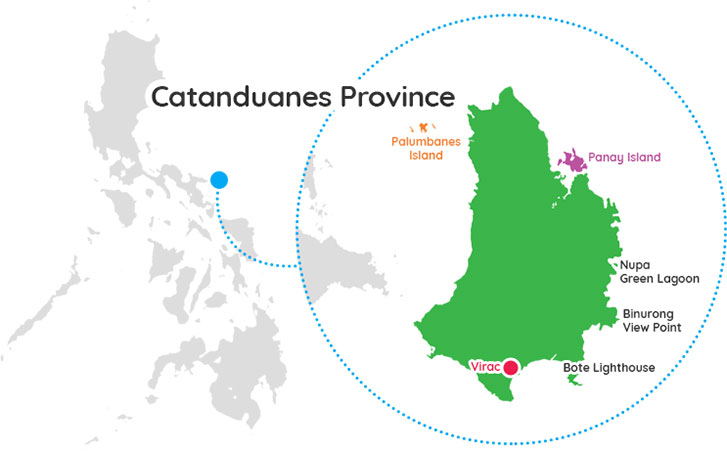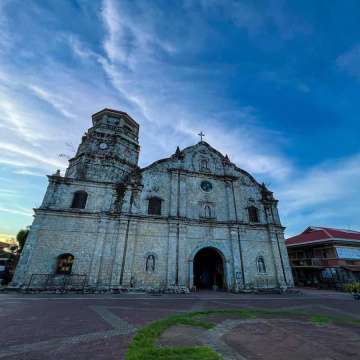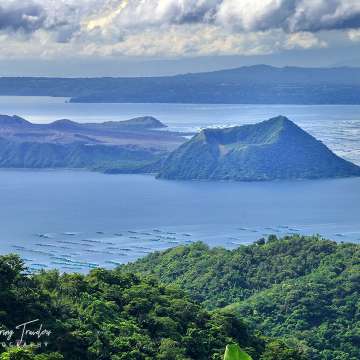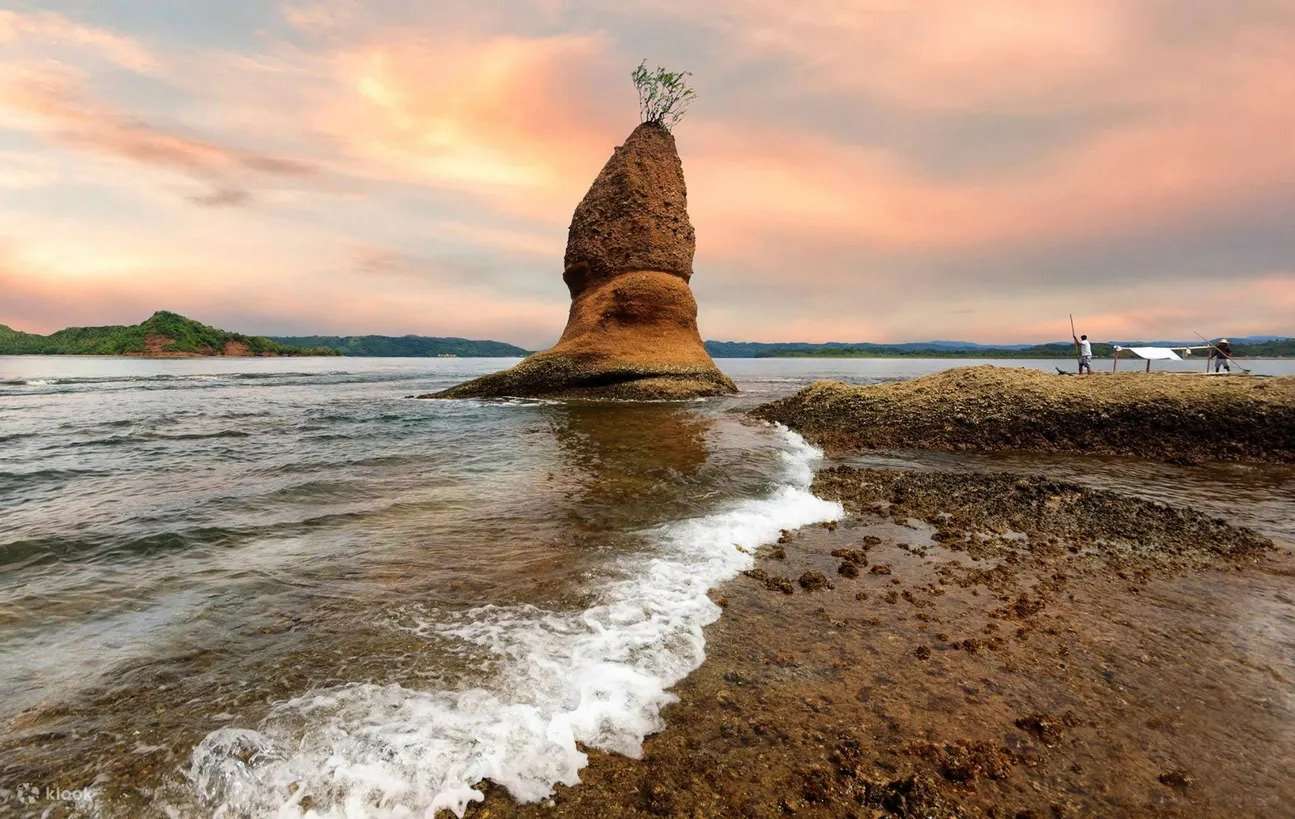About catanduanes

Catanduanes, officially the Province of Catanduanes, is an island province located in the Bicol Region of Luzon in the Philippines. It is the 12th-largest island in the Philippines, and lies to the east of Camarines Sur, across Maqueda Channel. Its capital is Virac. It had a population of 271,879 people as of the 2020 census.
The province comprises Catanduanes (mainland or main island), Panay Island, Lete Island, the Palumbanes group of islands (Porongpong, Tignob and Calabagio), and a few other small, surrounding islets and rocks. The province is also home to various mollusk fossil sites, notably the second-oldest ammonite site in the Philippines. These sites have certain species of ammonites that are found nowhere else in Southeast Asia. Because of the province's importance and rich geologic history, various scholars have suggested that, if the province would take the initiative to put its name forward in nomination, it would stand a good chance of being declared a UNESCO Geopark Reserve.
The five major income sources of Catanduanes are the services, agriculture, and fishing, tourism, housing, and manufacturing industries.
In the early 1900s, Catanduanes was a sub-province of Ambos Camarines. Later, it was a sub-province of Albay. It became an autonomous province in 1945. Congressman Francisco Perfecto filed House Bill No. 301, which separated the province from Albay; the bill was approved on September 26, 1945, and signed into law by President Sergio Osmeña on October 24, 1945. Remigio Socito, previously the Lieutenant Governor, was appointed the first Provincial Governor. When elections were held in 1947, Alfonso V. Usero became the first elected Governor.
On April 15, 2022, President Rodrigo Duterte has signed the Republic Act No. 11700 declaring Catanduanes province as the Philippines Abaca Capital.
Catanduanes' earliest recorded name was Isla de Cobos. This was the name given to it by Spanish conquistadores, early in 1573, when they came upon several tribes on the island who were living in the thatched huts that the tribal people called cobos.
“Catanduanes” comes from the words tandu, a native beetle, and samdong, a native species of tree, both were found throughout the island. People often referred to the island as katanduan or kasamdongan, meaning ‘a place where the tandu and the samdong tree thrive in abundance.’ The pronunciation of this word by Spanish-speaking people led to the coining of the Hispanicized version, Catanduanes.
History
Rulers (datus) from Borneo settled on the island of Panay. Their descendants then migrated throughout the archipelago and became the first settlers in Catanduanes.
The island was raided more than once by the Moros, who lived on the island of Mindanao. As a result of these destructive raids, many records of the past were destroyed or lost.
In 1573, Juan de Salcedo arrived in Catanduanes while hunting for pirates and conquered the natives. Three years later, a galleon expedition from Acapulco was shipwrecked near the island, and the survivors were either killed or enslaved. This event is commemorated at the Batalay Church in Bato, a few kilometers outside the capital town of Virac.
The evangelization of the island started twenty years later, when the Spanish soldiers, after subjugating the Bicol mainland, came back with Franciscan missionaries. The missionaries, armed with the cross and backed by the sword of the conquistadors, evangelized the entire population, beginning with the southern tribes, without meeting much resistance.
During the period of American rule, Bagamanoc, which had been a thriving municipality during the Spanish period, was reduced to a mere barrio of Viga and later of Panganiban.
During the American Regime, some locals refused to recognize the sovereignty of the United States, and most of them fled to the mountains. The American occupation did not last long. By 1934, the Americans had withdrawn from control of the island.
During World War II, Catanduanes was not spared from Japanese invasion. The Japanese erected garrisons in different parts of the island and heavily fortified it.
Members from catanduanes
Listings in catanduanes
More Provinces

capiz
Capiz, officially the Province of Capiz, is a province in the Philippines located in the central section of Western Visayas region. Its capital is the city of Roxas. Capiz is known for the Placuna placenta oyster shell that has the same name locally and is used for decoration and making ...read more

cavite
Cavite, officially the Province of Cavite, is a province in the Philippines located in the Calabarzon region in Luzon. Its capital is Imus. It is located on the southern shores of Manila Bay and southwest of Manila, it is one of the most industrialized and fastest-growing provinces in the Philippines.read more




